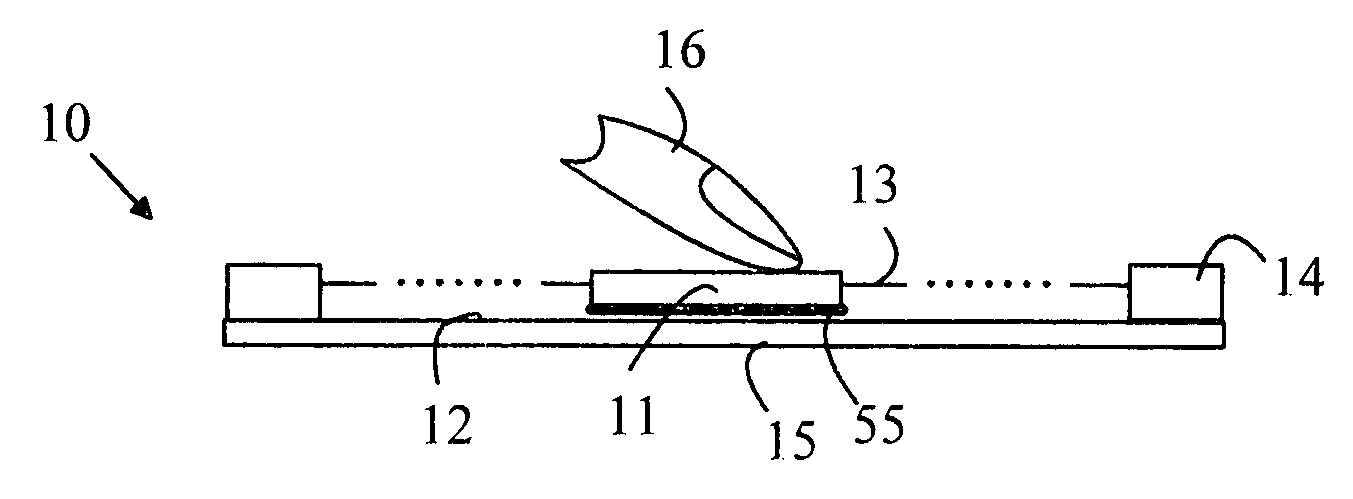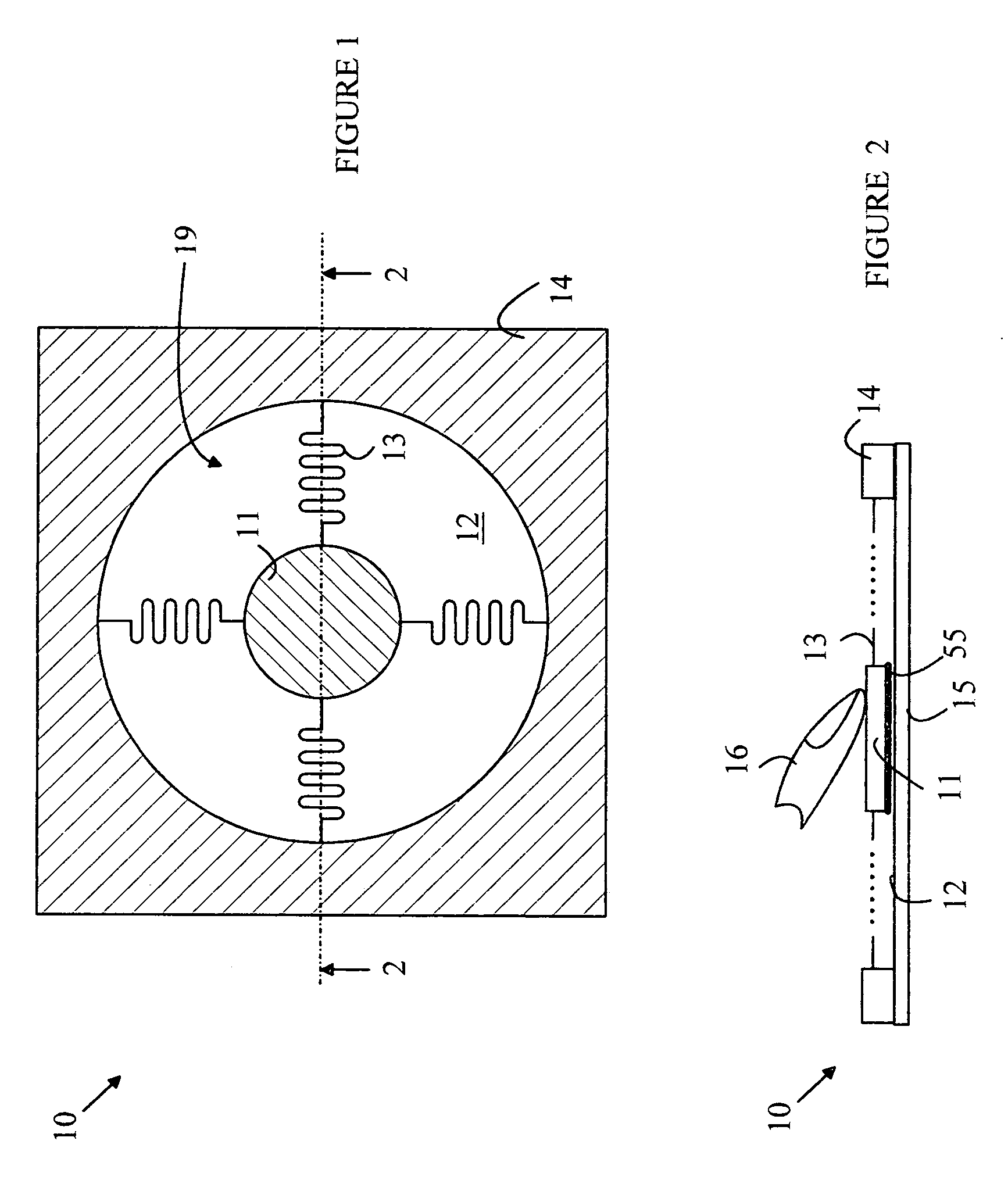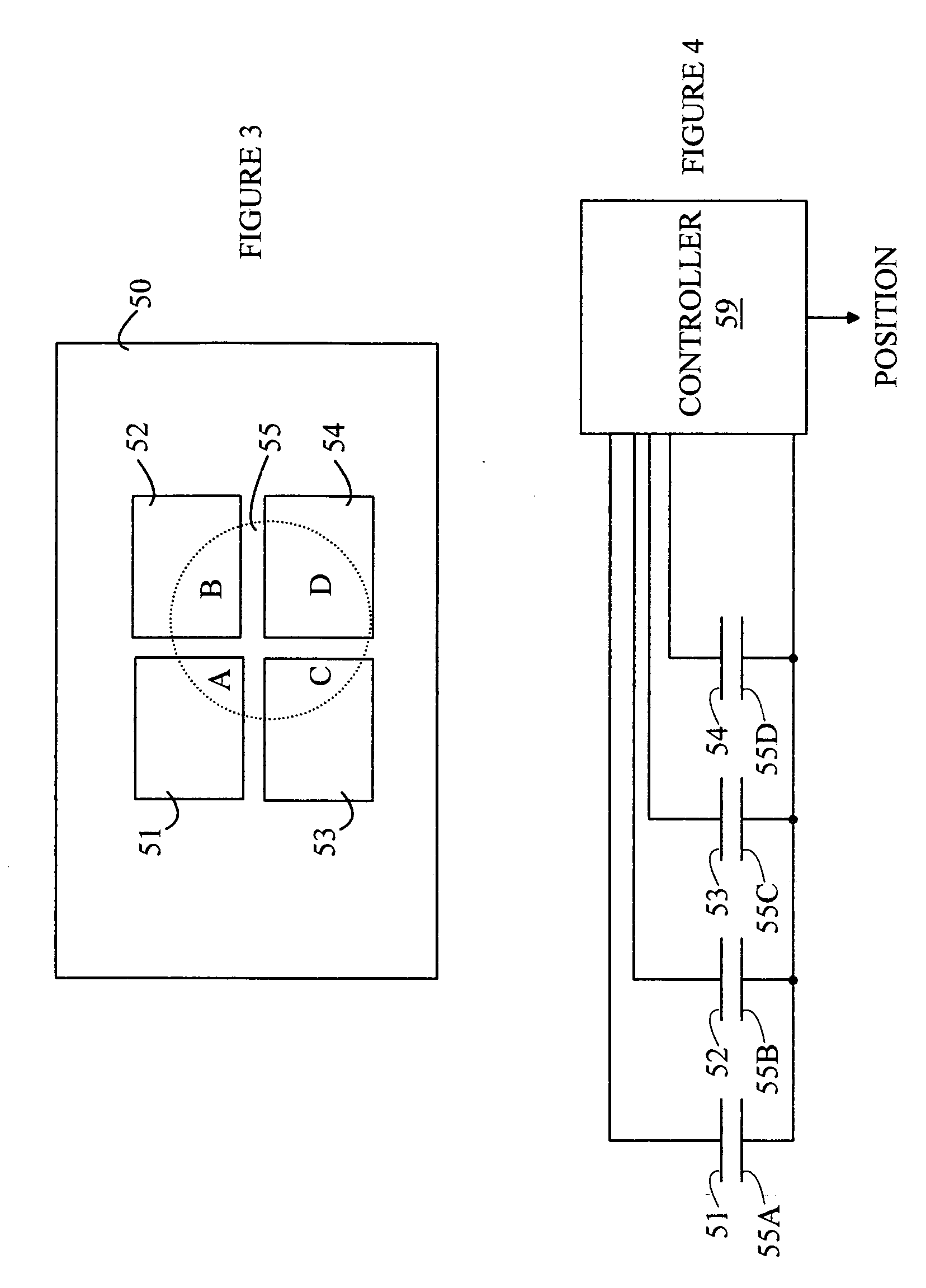Pointing device adapted for small handheld devices
- Summary
- Abstract
- Description
- Claims
- Application Information
AI Technical Summary
Benefits of technology
Problems solved by technology
Method used
Image
Examples
Embodiment Construction
[0028] The manner in which the present invention provides its advantages can be more easily understood with reference to FIGS. 1 and 2, which illustrate a puck-based pointing device 10 as taught in the above-described patent applications. FIG. 1 is a top view of pointing device 10, and FIG. 2 is a cross-sectional view of pointing device 10 through line 2-2 shown in FIG. 1. Pointing device 10 includes a puck 11 that moves over a surface 12 of a substrate 15 within a puck field of motion 19 in response to a lateral force applied to puck 11. The force is typically applied to puck 11 by a user's finger. Puck 11 includes a pressure sensing mechanism that measures the vertical pressure applied to puck 11. When the sensed pressure exceeds a predetermined threshold, the cursor tracking function is activated and the cursor moves on the screen in a direction and distance determined by the motion of the puck. In addition, pointing device 10 includes a sensing mechanism for determining the posi...
PUM
 Login to View More
Login to View More Abstract
Description
Claims
Application Information
 Login to View More
Login to View More - R&D
- Intellectual Property
- Life Sciences
- Materials
- Tech Scout
- Unparalleled Data Quality
- Higher Quality Content
- 60% Fewer Hallucinations
Browse by: Latest US Patents, China's latest patents, Technical Efficacy Thesaurus, Application Domain, Technology Topic, Popular Technical Reports.
© 2025 PatSnap. All rights reserved.Legal|Privacy policy|Modern Slavery Act Transparency Statement|Sitemap|About US| Contact US: help@patsnap.com



